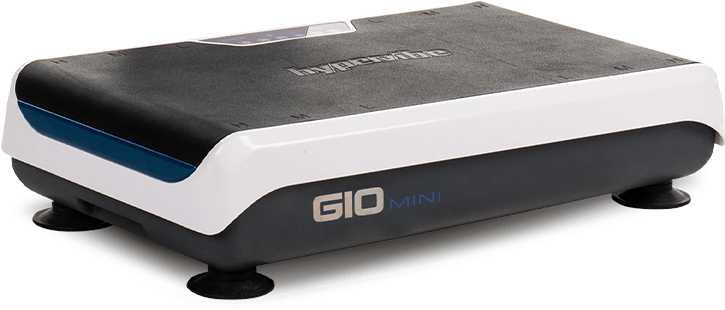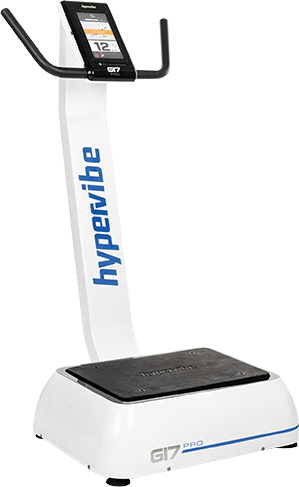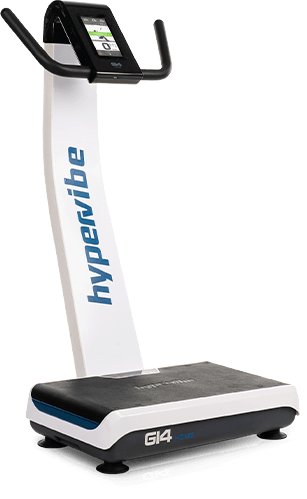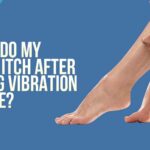
When you are choosing the right Whole Body Vibration Machine, there are 5 key things you need to consider.
These 5 steps will help you make the right pick in under a minute:





It can be overwhelming to look at specs and marketing hype when choosing a vibration plate.
With so many models, terms like “amplitude” and “frequency,” and bold claims from brands, it’s hard to know what really matters when choosing a vibration machine.
That’s why we’ve created this research-backed, goal-focused guide to help you cut through the noise.
We’ll break it down by:
Let’s break it down step-by-step so you can make a smart, confident decision.
|
Model |
Price |
Motion Type |
Frequency Range |
Max G‑Force |
Platform Size |
Warranty |
Best For |
|---|---|---|---|---|---|---|---|
|
Hypervibe G17 Pro |
$2,895 |
Pivotal |
5–35 Hz |
17g |
28” x 22” |
5 years |
Advanced fitness & therapy |
|
LifePro Rumblex 4D |
$449 |
Linear + Pivotal + Oscillating |
4–40 Hz |
3.2g |
30” x 18” |
Lifetime |
Home use & versatility |
|
Power Plate MOVE |
$3,395 |
Tri-planar |
30–40 Hz |
6g |
29” x 24” |
3 years |
Clinical use & performance |
|
VT High Frequency VT003F |
$299 |
Linear |
15–40 Hz |
3.7g |
22” x 19” |
2 years |
High-frequency vibration therapy |
|
Bluefin Pro Vibration Plate |
$249 |
Pivotal |
5–15 Hz |
2g |
24” x 17” |
1 year |
Budget-friendly workouts |
|
Eilison FitMax KM-818 |
$349 |
Oscillating |
4–12 Hz |
2.5g |
26” x 18” |
1 year |
Gentle full-body stimulation |
Let us now break it down based on key features to help you know which vibration plate to buy.
This breakdown compares WBV machines based on your goals.
This ranges from weight loss, muscle activation, recovery, and mobility.
Pro tip: The best way to compare WBV machines is to first define what you need it for, then find a machine that matches in motion type, frequency range, amplitude, and footprint.
Your first step is picking the best vibration machine motion type for you. This determines how the platform moves and how your body responds.
These platforms move like a seesaw.
If you are a beginner, senior, or recovering from an injury, this is the right type of vibration for you.
They are good for:
linear vibration moves straight up and down.
These vibration plates are Ideal for:
They move in three directions simultaneously.
This makes them deliver powerful muscle stimulation.
Tri-planar platforms are good when you want to build strength and bone density.
They are great for advanced users or athletes.
These are 2-in-1 platforms.
They combine oscillating and linear movement with extra pulse or vibration options.
They are premium products that offer versatility.
4D motion is a good choice when you want to switch between fitness and recovery.
Frequency tells you how fast the platform vibrates.
This matters because different frequencies serve different purposes:
Research shows that the best frequency for most users is 30–35 Hz.
It offers a good balance of therapeutic and performance benefits.
When you compare WBV machines, choose a model with an adjustable frequency so you can change it as you gain experience.
Amplitude measures how far the platform moves with each vibration.
The higher the amplitude, the more the muscle engagement:
If you’re new to vibration therapy, buy a platform with adjustable amplitude to avoid overdoing it early on.
G-Force is the acceleration your body experiences.
This is the “push” behind the vibration.
It combines frequency and amplitude into a single intensity metric.
Take a look at the formula for the mathematical minds:
G-Force = (Amplitude × (2π × Frequency)²) ÷ 9.81
G-force ranges from 1- to 9+:
G-force is only effective when paired with good posture and technique.
It is better to start low and grow.
Make sure the machine fits your body and your house before checking out.
Small units (less than 28″ wide) may save on space, but they restrict mobility.
Larger platforms, however, are more comfortable and allow full-body exercises.
Standard weight limits range from 250–330 lbs.
Choose a sturdier model if you’re doing dynamic exercises or weigh more.
Look for a stable platform with an anti-slip design.
This will ensure comfort and safety.





Your budget limit is a great way to decide which vibration plate to buy.
To help you with that, we have broken down the best machines based on price range.
This will make it easy to compare WBV machines based on your goals and investment level.
Recheck the comparison table for full specs on each model.
Beginners, seniors, and anyone else looking to try whole body vibration therapy without going over budget will find this tier to be beneficial.
Although these machines typically have smaller platforms, limited G-force, and oscillating motion, they are excellent for mobility, circulation, and mild fitness applications.
This is an affordable yet powerful linear model with adjustable frequency (15–40Hz) and a compact design.
It is well-suited for home users who want basic strength and balance benefits.
This is a close number two.
It is A popular Amazon model with 4D motion (oscillating, linear, and micro).
It is versatile for different fitness levels and offers value for the price.
Ideal if you’re comparing WBV machines for therapy, recovery, or light home fitness.
This tier gives you more robust specs.
The machines have wider platforms, higher G-force, and improved durability.
They also often offer multiple motion types and more refined engineering.
It is great for a seasoned user.
Hypervibe G17 has a G-force up to 17G and a frequency range of 5–35Hz.
It is a standout for users seeking results in strength, mobility, and lymphatic drainage.
This machine is built for serious home use and light clinical applications.
This is a trusted brand known for research-backed designs.
The MOVE delivers linear vibration at frequencies from 30–40 Hz.
It’s compact but highly effective for strength and performance.
If you want commercial-grade vibration, elite performance, or clinical outcomes, this tier offers the best.
You can expect durability, the highest G-force, and the most advanced features.
The Hypervibe G25 is a full-featured machine that is perfect for high-performance users.
It has up to 25G of force and high durability.
It is recommended for athletes, rehab professionals, and wellness centers.
If you are comparing WBV machines with maximum output, versatility, and clinical-grade specs, this is a great choice.
Clinics and professional gyms use this machine.
It provides sophisticated linear motion, touch screen coaching, and accurate frequency control (25–50 Hz).
Buying a vibration machine doesnt need to be stressful.
Follow this step-by-step process to cut through the noise and choose a model that meets your needs:
Before shopping, check how much room you have.
Most whole body vibration machines need at least 2 to 3 feet of floor space.
It is good practice to leave extra clearance if you plan to do dynamic exercises like squats or lunges.
This is a key step in understanding how to choose a whole body vibration machine that matches your personal goals.
We went through each motion type and what goals each is best suited for.
Here is a short recap;
Look for machines with a frequency range between 15–40 Hz.
This range supports both therapy and fitness goals.
Secondly, check the amplitude.
Choose a low amplitude for gentle stimulation and a higher amplitude for intense muscle engagement.
Some machines can get loud, especially at higher settings.
If you require a quiet setup, read the machine reviews and look for noise ratings.
When using vibration machines, accessories are a great addition.
Look for add-ons that can improve your experience, such as workout guides, Bluetooth speakers, resistance bands, and remote controls.
Investing in a quality vibration plate is worthwhile.
Confirm that the parts and labor warranties are for at least two years.
Also, check that the business provides simple access to replacement or support parts when necessary.





Start with your main objective.
Do you need to improve bone density, muscle strength, circulation, or recuperation?
Next, consider important features of the machine like the platform size, frequency range (ideally 15–40 Hz), and motion type (oscillating vs. linear).
It helps to use a whole body vibration machine comparison table to weigh models side by side based on your needs and space.
Not always.
For athletes or more experienced users, higher G-forces (9G and above) produce stronger muscle contractions.
However, lower G-forces (2G–6G) are safer and more comfortable for beginners, rehab, and circulation.
When you compare WBV machines, don’t just chase numbers; match G-force to your fitness level and usage goals.
Remember, you need to match the G-force to good posture and technique for it to be effective.
Yes,
Many mid- to high-end vibration plates are designed for multi-purpose use.
Look for machines with adjustable frequency, multiple motion types (like 4D), and accessories.
These models can switch from gentle lymphatic drainage to high-intensity strength training.
Knowing how to choose a whole body vibration machine that fits changing needs will save you from upgrading later.
Look for certifications that confirm manufacturing quality, safety, and performance.
The most relevant ones include:
Use certifications for whole body vibration machine comparisons, especially for professional use.
Choosing the right vibration plate doesn’t have to be difficult.
Choose the motion type that best suits your objectives.
Confirm that the frequency and amplitude correspond to your level of fitness, and don’t forget to look at the platform size, G-force, and warranty.
These specifications will influence every aspect of your experience; they are more than just numbers.
Still not sure where to start? Get the Hypervibe buyers guide to explore the full Hypervibe product lineup to find your perfect match.

To use a vibration plate for weight loss, stand, squat,...

Lately, vibration therapy (VT) has been finding implementation in more...

The lymphatic system, also called the lymphoid system, is an...

Taking into consideration the growing popularity of the vibration plate,...

Most probably you are already familiar with the body vibration...